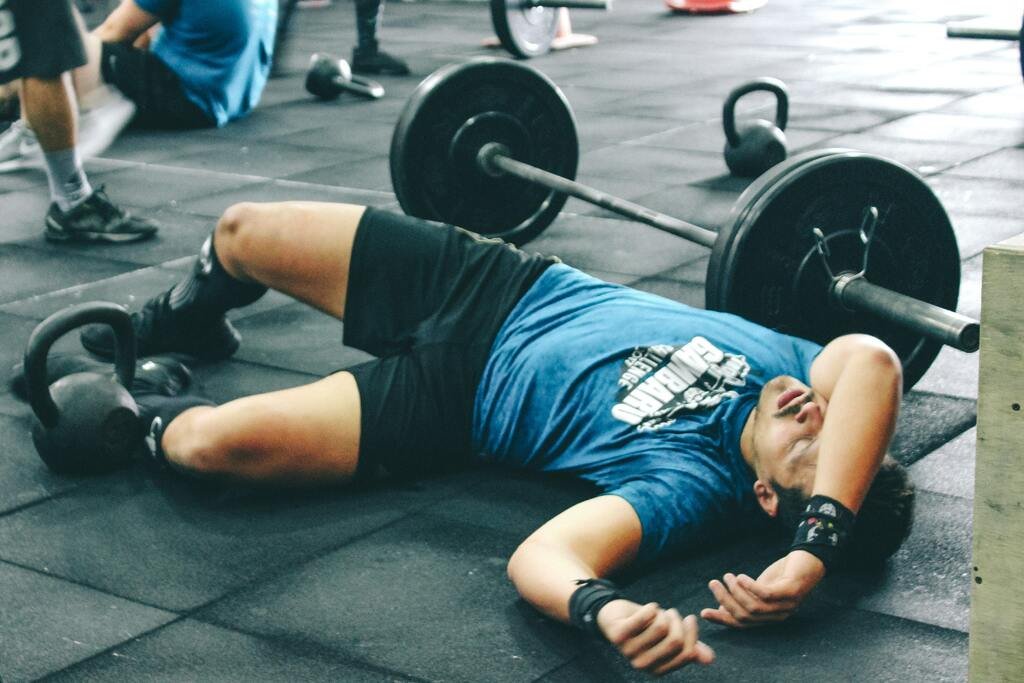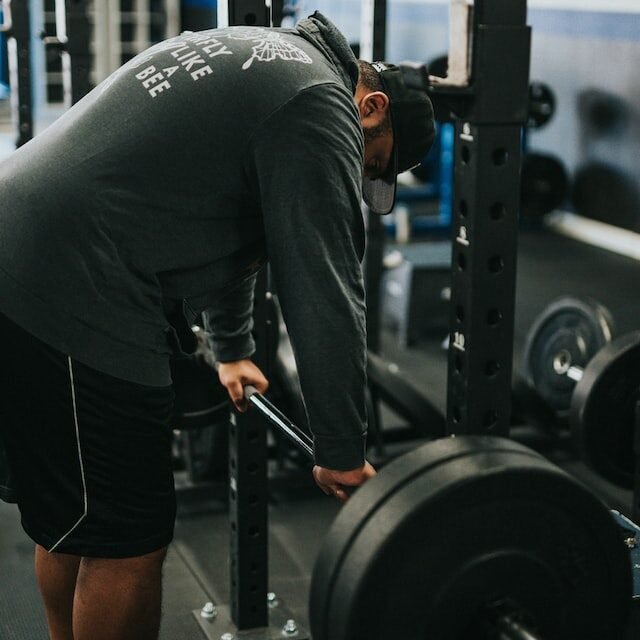
Why Is Leg Day So Hard? Find Out Here
If you’ve ever stepped foot in a gym, then you’re most likely familiar with the dread that accompanies “leg day”. Facing the squat rack or gearing up for some gruelling deadlifts can seem impossible when all your body wants to do is give out.
There’s more than meets the eye as to why leg day is so difficult, it’s not just a matter of pushing through soreness or lack of motivation.
In this blog post, we’ll look at why leg days require so much energy and exactly what makes them so hard.
Let’s get to it…
Why is leg day so hard?
The main reason why leg days are so hard is that they involve large muscles. Working these muscles is taxing, both mentally and physically. In addition to the large muscle groups being worked, compound exercises are used for leg day workouts which involve multiple muscles working together at once (squats & deadlifts). These require more energy and effort within a single exercise session than if you were to do isolation exercises (exercises that target individual muscles). This means that the intensity of your workout is increased, leading to more fatigue. In addition to the physical demands of leg day, there are also mental barriers that can make them seem impossible. Leg days push your body to its limits and require a lot of focus and determination to complete. This can be mentally draining due to the amount of energy it takes to stay mindful and perform each exercise with the correct form. Leg day also elevates your heart rate more than other exercises due to the intensity of the movements. This means that you require more oxygen as your muscles are working harder and demand extra energy from your body. As a result, it takes longer for your body to recover afterwards.
Leg day can be very demanding for various reasons, let’s look more in-depth at the reasons why…
Muscles used
The muscles used on leg day are the quadriceps, hamstrings, calves, glutes, and core muscles. These all work to enable body movements and generate force.
- Quadriceps – These muscles are found at the front of your thighs and help you move your legs in all directions.
- Hamstrings – Found on the back of your thighs, these muscles help you bend your knees and extend your hips.
- Calves – These are the muscles located at the back of your lower legs, they help with ankle movement and provide balance.
- Glutes – The gluteal muscles are located in your buttocks and help you extend your hips and rotate your legs.
- Core muscles – Your core muscles provide stability and help to transfer energy from your upper body to the lower body.
These are all larger muscle groups, which require more energy to work. In addition to these muscles, compound exercises like squats and deadlifts involve multiple muscle groups working together at once, adding an extra challenge for your body.
Benefits of leg day
Although leg day can be tough, the rewards are worth it. Regularly training your legs improves your balance and coordination as these muscles help stabilize and support your body in everyday movements.
Your overall strength is also improved as you build lean muscle in these large muscle groups. This makes it easier to perform other exercises, as more muscle and strength lead to increased power.
Day-to-day movements will also become easier as your legs become stronger. This means that activities like walking upstairs, running and carrying heavy objects will be a breeze.
Your cardiovascular health is also improved through leg day workouts as they elevate your heart rate more than other exercises. This means you can burn more calories and get fitter.
Compound exercises
Two of the most common exercises you will do on leg day are squats and deadlifts, these are compound exercises which involve multiple muscle groups working together at once. Squats will target your quads, hamstrings and glutes while deadlifts will target your hamstrings, lower back and glutes.
These exercises require more energy than isolation exercises (which work individual muscles) as multiple muscles are working together. This means that you will feel the effects of these exercises more and fatigue faster, leading to a longer recovery time afterwards.
Compound exercises are considered the most effective form of exercise as they will help you build muscle and burn fat quickly. This makes them a great addition to your leg day workout.
With single-muscle exercises, you’ll find that although they are fatiguing, it doesn’t compare to the exhaustion of compound movements. The reason for this is that when performing an isolation movement, only one muscle group will be worked at a time which will create less fatigue overall.

Large muscles require more oxygen
The large muscle groups that we use during leg day workouts require more oxygen than smaller muscle groups. This is because they take up more space and have greater demands for energy.
As a result, you will feel the effects of exercises such as squats and deadlifts more, as your body is having to work harder to provide these muscles with enough oxygen. This can lead to a greater level of fatigue after your workout, as your body needs more time to recover.
Working on smaller muscle groups is not as strenuous, so your fatigue after a workout will be significantly less than with larger muscles. This is due to the lower demand for oxygen during exercise.
For example, when you are working out your arms by doing bicep curls, the oxygen demand is low, which means you won’t feel as exhausted after exercising.
You also need to make sure you are well hydrated and fuelled before, during and after your heavy leg day workouts. This will help to give your body enough energy and oxygen to complete the exercises safely.
Elevates heart rate
Another thing to consider when it comes to leg day workouts is that they require more energy, which in turn elevates your heart rate. This means you can burn more calories during your workout and get fitter, as you are pushing yourself to higher intensity levels.
The combination of the large muscle groups being worked, and the use of compound exercises on leg day will lead to an increase in your heart rate, providing you with a more effective workout.
Training your legs not only requires heavy lifting but also increases your heart rate throughout the session. This combination of physical exertion makes leg days particularly draining and can become more difficult than other workouts.
For those unfamiliar with cardiovascular exercises, heavy compound leg workouts can be a great shock to the system. I have found that after doing these types of workouts, my body feels fatigued and exhausted the next day – but it’s something I’ve learned to plan for.
This makes leg day workouts an effective way of improving your overall health and fitness.
Related: Why do my squats lean to the side?
It’s draining for CNS
Leg day workouts are particularly taxing on the central nervous system (CNS). This is because compound exercises put a lot of strain on the CNS, as they require you to use multiple muscles simultaneously.
Your central nervous system is responsible for sending signals to your muscles, telling them when and how they should move. By using multiple muscles at the same time, your CNS has to work harder and become fatigued more quickly. This can lead to a higher level of exhaustion than other workouts.
This level of intensity will put your CNS under immense pressure, as it needs to coordinate all of the different muscles being used. As a result of the fatigue, you may experience muscle soreness afterwards.
All of this can make leg day an intimidating experience, but it doesn’t have to be. With a proper warm-up and understanding of the exercises you are doing, leg day can be a great way to improve your fitness level.
Stimulates hormones
Leg day workouts also stimulate hormones that have a positive effect on your body. Compound exercises release testosterone and human growth hormone (HGH). These hormones are responsible for the growth and repair of muscle tissue, as well as aiding in fat loss.
This means that regular leg workouts can help you to build muscle and lose body fat more effectively, making them beneficial for those looking to improve their overall physique.
The larger muscles being worked during leg day also help to release endorphins, providing you with a natural high. This can be beneficial for those looking to improve their mental attitude, as endorphins can help to elevate your mood.
This alone should be enough to convince you that leg day workouts are important and beneficial.
Delayed Onset Muscle Soreness
The results of leg day workouts can be quite brutal, in the sense that your mobility may be compromised afterwards. This is due to the demands of the exercises and because of delayed onset muscle soreness (DOMS).
Delayed Onset Muscle Soreness (DOMS) is the result of your muscles being worked to their limits and is common after heavy lifting.
DOMS is caused by the breakdown of muscle fibres, which can leave you feeling sore and stiff. The good news is that this is completely normal and should subside within a few days.
The difficult part is that you may feel like you cannot move as freely, but it’s important to understand that this is a sign of progress and means that you have put in the hard work.
DOMS can be uncomfortable, but it does not mean that you have done anything wrong. It is a sign that you have worked hard and pushed your body to its limits.
In the long run, you will feel more energized and experience better mobility, as well as have bigger muscles. These larger muscles can be beneficial for everyday movement, as they help to make activities such as walking and running easier.

The intensity of the workout
The increased intensity of leg day exercises makes them difficult for some to complete. The multiple muscles being used at the same time, as well as the large muscle groups being targeted, all combine to create a higher level of difficulty than other workouts.
The combination of compound exercises and larger muscles can cause a lot of fatigue, even within short periods of time. This means that you might not be able to complete as many sets or reps as you would with other workouts.
Don’t be disheartened. The objective of leg day isn’t necessarily how many sets or reps you can do, but to challenge your body and take it to its limits.
Leg day seems like a daunting task, but with the correct technique and understanding of what you are doing, it can actually be quite enjoyable.
Mental dread
The mental dread associated with leg day can be a major obstacle when it comes to completing workouts. It’s easy to think of excuses not to do leg day and to focus on other body parts.
You don’t have to think too hard in order to convince yourself NOT to do leg day, but it’s important to remember that leg day is an essential piece of any good fitness routine.
However, it’s important to understand the benefits of a leg day workout and that the difficulty is only temporary. Once you have pushed yourself and completed the workout, you will feel a sense of accomplishment that can motivate you to continue.
When you stop and think about it, leg day isn’t all that bad. Think about all the benefits that have been mentioned here, and how much progress you can make if you stick to the plan.
Plus, you want to have a well-rounded physique right? You don’t want to be one of these people you see who have very impressive upper bodies and very unimpressive lower bodies.
So, although leg day might be hard, it’s important to keep in mind that the rewards can outweigh the difficulties. The improved mobility, larger muscles, and sense of accomplishment all make it worth the effort.
Related: Are your shoulders supposed to be sore after deadlifts?
Final thoughts…
Leg day is hard, but that doesn’t mean it should be avoided. It’s an important part of any good fitness routine and can offer many benefits.
The difficulty of leg day is only temporary, and you will experience increased mobility, improved performance, and bigger muscles if you stick to the plan.
It’s important to remember all the potential benefits that come with leg day, as well as how rewarding it can be when you successfully push yourself and complete the workout.
So, don’t be discouraged by the difficulty of leg day – use it to motivate you and challenge yourself. With some hard work, dedication and consistency you can achieve the results you are after. Good luck!
Do you think leg day is hard? Let me know in the comment section below.



Oh my goodness! Impressive article dude!
Thanks, However I am having troubles with your RSS. I don’t know the reason why I can’t join it.
Is there anyone else having similar RSS issues? Anybody whoo knows the answer will you kindly respond?
Thanks!!
This site definitely has all of the information I needed about this subject